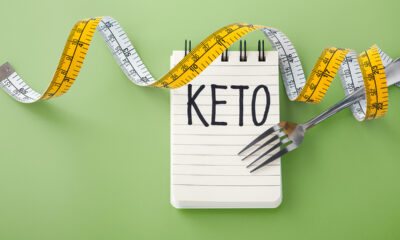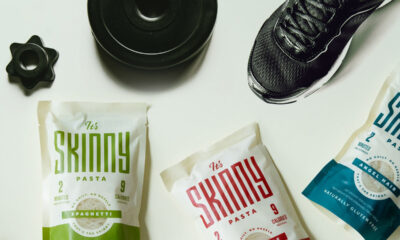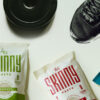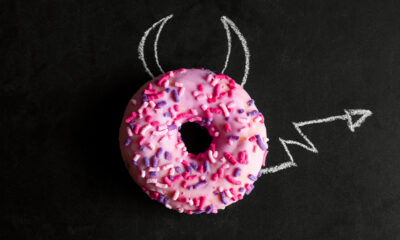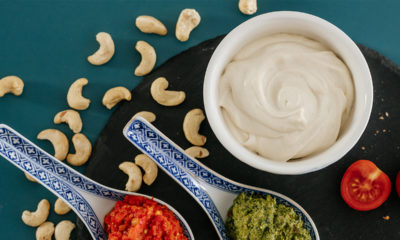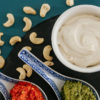Health
How To Stop Winter Ruining Your Fitness Goals
As summer moves into winter, it’s easy to see how harvest season can cool motivation, so here are four ways to beat the autumn blues and stay true to your fitness path.
Falling light
Good luck trying to wake up to train when it’s still dark outside. Of course, if you’re someone who prefers morning workouts, you’ll be up and out of the house long before the sun rises, anyway.
But for those who find it difficult to spring out of bed with a smile during the long winter nights and mornings, it’s not just your motivation that takes a hit during the autumn, it’s also your mood.
You see, seasonal affective disorder (SAD) is a type of depression related to the change in seasons. In most cases it begins towards the end of autumn and continues throughout the winter months.
Although the specific causes of SAD are unknown, it’s believed that a lack of sunlight alters the production of hormones, like melatonin and serotonin. Higher levels of melatonin may result in decreased energy, while a dip in your regular serotonin levels – a brain chemical that affects mood – promotes feelings of sadness. Unfortunately, a disruption in your body’s internal clock may also disturb your sleep, appetite and energy levels.
Although we all have bad days, you may want to see your physician if you’re having trouble getting along with others, sleeping excessively or experiencing changes in appetite or weight. Light therapy, also known as phototherapy, is a popular treatment for seasonal depression. Your physician may suggest you sit in front of a light box – which is exactly what it sounds like – on a daily basis for a specified amount of time. Light therapy may also be as simple as ensuring your home is well lit and the windows are kept open throughout the day.
Since most doctors recommend light therapy upon waking, you may want to add an early morning walk to your daily routine. Another option is to take a ‘walking lunch’ at work. The abundant foliage and colourful leaves are sure to create a peaceful and calming environment.
On days you can’t get outside, you can certainly look forward to the bumper autumn line-up of new TV shows.
Cold weather
One day it’s sunny and pleasant, the next day it’s raining or even snowing. The only thing that’s guaranteed is a nippy breeze that sends chills down your spine as you scurry to grab the morning paper. As a result, you look less like a woman and more like a giant blob of clothing.
It’s a lot easier to skip dessert when you’re wearing a short summer dress and have weekend plans to hit the beach. Though it’s commonly asserted that we gain 5lb over the festive season, research in the New England Journal of Medicine found that this weight gain is actually closer to just 1lb, but this increase isn’t lost by the time spring comes around again. So once it’s on, you’re stuck with it.
Use this time to secretly start preparing for summer. Since your body will be concealed under multiple layers of clothing, you’ll have the perfect opportunity to unveil toned arms and a flat stomach as soon as the winter cold passes.
If you’ve been eating less-than-healthy foods, it’s time to get back on track. Start by getting rid of the high-calorie apple pie sitting on your kitchen counter and go easy on the pumpkin spice lattes at Starbucks.
Also, there’s more to autumn than Halloween sweets and fattening comfort foods. Fresh seasonal produce, like cranberries, pomegranates, sweet potatoes and eggplant, will be packed with flavor and full of beneficial nutrients.
But it’s not just the quality of your food, it’s also the quantity of what you eat that matters. Keep a meticulous food diary or online calorie counter to log the amount and types of food consumed each day, which could more than double your weight loss, found research at Kaiser Permanente’s Center for Health Research in the US. This journal can also help you to identify triggers, like boredom, that result in mindless munching. And since you’ll have to record everything, you’ll think twice before reaching for that second slice of pizza.
End-of-year deadlines
Summer fun has drifted away, and now you’re slammed with exams, projects and business trips. Along with the increased workload comes a lot of increased stress. Unfortunately, chronic stress isn’t just counterproductive when it comes to accomplishing your work. It also results in a number of significant health consequences, like decreased immune function and weight gain.
However, it’s not just stress hurting your health. When you’re working 10 or more hours a day, it can be hard to find time to sleep. Your workouts typically take a back seat to other activities or the chance to simply relax on the couch. The chore of packing your clothes, getting changed in a small bathroom, finding enough energy to actually work out and then finally making it home around 8pm can be daunting. As a result, many of us lose the motivation to work out and give up on the concept entirely.
It’s important that you find outlets for letting off steam. A good kickboxing class is an excellent way to release your frustrations and arrive refreshed for work the next day. On the other hand, a calming yoga session may be just what you need to put things back in perspective. Whichever method you choose it should calm you.
Overweight women who practised mindful eating and simple stress reduction techniques like the ones above instantly helped prevent weight gain without dieting, found research at the University of California, US. Remember that your workout doesn’t have to be a long, drawn out event. In fact, you don’t even need a gym. All you need is a short 30-minute window each day for physical activity. A little bit of aerobic activity goes a long way. Just 20- 30 minutes of walking, hiking, swimming or biking can lower cortisol levels (your stress hormone).
On days when your schedule is too hectic to squeeze in an entire workout, there are still ways to increase your overall activity. Try adding voluntary movement into your daily routine, like parking further away from the off ice or doing a lap around the building at lunch. Add all these activities together, and chances are you’ll have completed at least 30 minutes of cardiovascular exercise.
Saturday temptation
Bring on the pies and pints – it’s football season. Fans of all ages, sexes and sizes join together each week to celebrate, cry and eat tons of unhealthy food and drink a few beers at their home ground or the local pub. It’s easy to feel like each game is a special occasion and therefore an excuse to ‘treat yourself’ to thousands of unnecessary calories.
In fact, research in Nutrition Review shows that when it comes to eating habits, we tend to accept different standards for a special occasion, which explains why we’re more likely to make unhealthy choices. Unfortunately, these splurges add up over the course of an entire campaign and may cause you to need a larger shirt size by the business end of the season.
Oh, and did I mention that the outcome is even worse if you’re cheering for a losing team? A study in Psychology Science, aptly titled From Fan to Fat, showed a link between sports outcomes and eating behaviour. Our American cousins ate larger amounts of high-fat foods the day after their NFL team lost, while those who supported a winning team ate lighter foods in moderation.
The researchers found that after a defeat, saturated fat consumption went up by 16%, while after a victory it decreased by 9%. Apparently we might have more than just our pride to lose this season.
Don’t let your health stray offside. It’s easy to get caught up in mindless munching throughout the game. If you’re someone with a food-focused mind-set, stay in your seat at half time and keep a bottle of water handy. It may also be helpful to chew gum between meals, since your minty fresh breath should deter you from eating.
If you’re looking to satisfy your hunger pangs after a stressful 90 minutes, tear open a bag of peanuts. You’ll find them behind the bar in most pubs and they’re full of antioxidants. Also, eating just 10g per day is linked to lowering your risk of several major causes of death like stroke and cardiovascular disease. Just try and pick the unsalted or lightly-salted varieties to ensure your sodium intake doesn’t skyrocket.
Find fitness advice and more in every issue of TRAIN FOR HER magazine.



